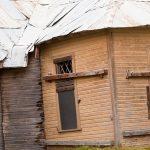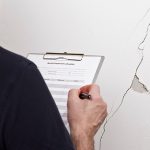Should I Repair Structural Damage On My Own?
Structural damage is a serious matter that requires careful consideration and expert attention. When faced with the daunting task of repairing structural damage, many homeowners ponder whether they should embark on the journey alone or seek professional assistance.
While the allure of cost savings and a sense of accomplishment may tempt some to take matters into their own hands, it is crucial to weigh the risks and benefits before making a decision of such magnitude.
In this article, we will explore the factors that should be considered when contemplating do-it-yourself structural repairs, shedding light on the importance of expertise, safety concerns, and long-term implications.
Evaluating the Severity of Structural Damage
When faced with structural damage, it is imperative to accurately assess its severity to determine the appropriate course of action. The severity of structural damage encompasses not only the visible signs but also the potential implications for the overall integrity of the building.
By understanding the extent of the damage, homeowners can make informed decisions regarding repairs and minimize the risk of further property damage. In complex cases, it may be beneficial to engage the expertise of public adjusters who specialize in evaluating structural damage and can provide objective assessments.
Conducting Thorough Inspections
A thorough inspection is paramount to evaluate the severity of structural damage accurately. Homeowners should examine the affected areas meticulously, looking for visible cracks, distortions, or shifts in the structure. Additionally, it is crucial to consider less obvious signs such as uneven floors, doors or windows that no longer close properly, or cracks in the foundation.
These assessments should extend beyond the surface level, encompassing the underlying systems like plumbing, electrical, and HVAC. By documenting and photographing the damage, homeowners can provide comprehensive information to professionals and public adjusters, aiding in the evaluation process.
Potential Long-Term Implications
The consequences of structural damage extend far beyond the immediate need for repairs, often leaving a lasting impact on the property and its owners. Understanding the potential long-term implications is critical in making informed decisions regarding structural damage repairs.
Neglecting or inadequately addressing structural damage can lead to a series of cascading effects, including diminished property value, increased maintenance costs, and potential safety hazards.
Recognizing these implications empowers homeowners to take proactive measures, whether through professional repairs, engaging public adjusters, or implementing preventive maintenance strategies.
This section delves into the significant long-term implications of structural damage, emphasizing the importance of comprehensive solutions and proactive approaches to mitigate potential risks.
Impact on Property Value and Resale Potential
Structural damage can significantly diminish a property’s value and negatively affect its resale potential. Prospective buyers are often wary of investing in properties with a history of structural issues. Even if repairs have been made, potential buyers may still harbor doubts about the stability and safety of the structure.
Consequently, selling a property with a known history of structural damage may prove challenging, and owners may have to settle for lower offers than they would have otherwise received.
Increased Future Maintenance and Repair Costs
Failure to adequately address structural damage can result in additional maintenance and repair costs. Untreated structural issues tend to worsen with time, leading to a higher likelihood of recurring damage or the development of new problems.
What may have been a relatively minor repair initially could escalate into a more extensive and expensive issue. Promptly addressing structural damage with professional assistance helps avoid these escalating costs and preserves the overall integrity of the property.
Safety Hazards for Occupants
The safety of occupants is of utmost concern when it comes to structural damage. Neglected or improperly repaired structural issues can lead to hazardous conditions within the property. Cracks, foundation problems, or weakened support structures may compromise the building’s stability and pose safety risks to those living or working inside.
Prioritizing professional repairs and safety evaluations can prevent potential accidents and ensure the well-being of occupants.
Insurance and Warranty Considerations
Addressing structural damage promptly and effectively is vital for insurance and warranty considerations. Insurance companies may be less likely to cover damages from pre-existing structural issues or DIY repairs that do not meet professional standards.
On the other hand, prompt and proper repairs conducted by professionals may enhance the chances of successful insurance claims, especially with the support of public adjusters who can provide objective evaluations to support the claim.
Long-Term Peace of Mind
Homeowners can enjoy long-term peace of mind by proactively addressing structural damage and taking appropriate measures. Knowing that the property is stable, safe, and adequately maintained allows homeowners to focus on other aspects of life without constantly worrying about potential structural issues.
The DIY Approach: Pros and Cons

When faced with structural damage, homeowners often contemplate the possibility of embarking on a do-it-yourself (DIY) approach to repairs. While the allure of cost savings and a sense of accomplishment may be enticing, it is essential to carefully consider the pros and cons before deciding on a DIY route.
Understanding the potential risks and benefits associated with DIY structural repairs is paramount in making an informed decision that mitigates the chances of further property damage and ensures the safety of occupants.
Additionally, it is crucial to acknowledge the limitations of DIY repairs, particularly in cases of significant structural damage, where the involvement of professionals and public adjusters may be indispensable.
Pros of the DIY Approach
Cost Savings: Undertaking structural repairs on your own can potentially save a significant amount of money in labor costs. Homeowners can allocate their budget towards materials and equipment by eliminating the need to hire professionals, resulting in overall cost reduction.
Sense of Accomplishment: Successfully completing a DIY repair can provide homeowners with a sense of satisfaction and accomplishment. Overcoming challenges and acquiring new skills can be rewarding, instilling a sense of pride in maintaining one’s property.
Cons of the DIY Approach
Skill and Expertise: Structural repairs necessitate a deep understanding of building systems, engineering principles, and safety protocols. Lacking the necessary knowledge and expertise increases the risk of inadequate repairs, potentially exacerbating structural damage or compromising the stability of the building.
Safety Concerns: Working on structural repairs without proper training and equipment can pose serious safety hazards. Structural damage may result in compromised structural integrity, making certain areas unstable and prone to collapse. In contrast, professionals have the knowledge and tools to mitigate risks and ensure safety during the repair process.
Potential Property Damage: DIY repairs carry the risk of unintentionally causing further property damage. A lack of experience or a comprehensive understanding of the underlying issues can lead to incomplete repairs, worsening the structural damage over time.
Lack of Accountability: In cases of insurance claims for structural damage, DIY repairs may face scrutiny from insurance companies. The absence of professional evaluations and reports can complicate the claims process and result in inadequate compensation for the damages.
Engaging public adjusters can help provide objective evaluations and advocate for fair settlements on behalf of homeowners.
Complex and Extensive Repairs: Significant structural damage often requires complex repairs beyond most DIY enthusiasts’ capabilities. In such cases, professionals possess the expertise, specialized tools, and resources to address intricate issues and ensure proper restoration.
While cost savings and a sense of accomplishment may be appealing, the lack of expertise, safety concerns, potential property damage, and the absence of professional evaluations are important factors to bear in mind.
Particularly in cases of significant structural damage, the involvement of professionals and public adjusters is crucial for accurate assessments, effective repairs, and advocacy during insurance claims.
Common Mistakes in DIY Structural Repairs
Recognizing and avoiding common mistakes in DIY structural repairs is vital in safeguarding the integrity of the building and the safety of its occupants.
Lack of Proper Assessment: Underestimating the Severity of Structural Damage
One of the most common mistakes in DIY structural repairs is a failure to conduct a comprehensive assessment of the damage. Overlooking hidden issues or assuming that visible damage is isolated can lead to incomplete repairs that do not address the root causes of the problem.
Without a proper evaluation, homeowners risk underestimating the severity of the structural damage and potentially overlooking critical safety concerns.
Misinterpretation of Building Codes and Regulations
DIY enthusiasts may inadvertently violate building codes and regulations when attempting structural repairs. Building codes are in place to ensure the safety and compliance of structures with industry standards.
Failure to adhere to these regulations can result in unsafe conditions and even legal repercussions. Professional contractors are well-versed in building codes and will ensure that repairs meet all requirements.
Inadequate Knowledge of Structural Systems and Techniques
Structural repairs require specialized knowledge of building systems and repair techniques. Without the expertise to identify load-bearing walls, appropriate material selection, and proper support methods, DIY repairs can lead to structural instability and additional property damage. Professionals possess the necessary training and experience to implement effective solutions that ensure the long-term stability of the building.
Ignoring Safety Protocols
DIY structural repairs can expose homeowners to safety hazards if proper safety protocols are not followed. Working with heavy materials, power tools, and in elevated positions demands caution and adherence to safety guidelines.
Professionals are equipped with the necessary safety gear and protocols to minimize the risk of accidents during repairs.
Lack of Documentation for Insurance Claims
In the event of property damage covered by insurance, DIY repairs may only be recognized as valid claims with proper documentation and professional evaluations.
Public adjusters play a crucial role in advocating for homeowners during the claims process, but without comprehensive documentation from professionals, it becomes challenging to support the compensation claim.
Focusing on Cosmetic Fixes Rather Than Root Causes
DIY repairs sometimes prioritize cosmetic fixes over addressing the underlying issues. While cosmetic fixes may provide temporary improvements in appearance, they do not address the structural damage’s root causes.
Neglecting the underlying problems can lead to further deterioration of the structure and more extensive repairs in the future.
The Importance of Professional Assistance
When confronted with structural damage, seeking professional assistance is paramount in ensuring your property’s safety and integrity. Professional expertise brings invaluable insights, precision, and a wealth of experience to the table, making a significant difference in the outcome of repairs.
Addressing structural damage is a complex task that demands specialized knowledge of building systems, engineering principles, and safety protocols.
By enlisting the aid of professionals, homeowners can benefit from accurate assessments, tailored solutions, and a higher standard of quality that minimizes the risk of further property damage.
Moreover, in navigating the intricate landscape of insurance claims, public adjusters can play a vital role in advocating for homeowners’ best interests, ensuring fair compensation, and streamlining the process.
Expertise and Knowledge: Precision in Assessing and Addressing Structural Damage
Professional assistance brings with it a wealth of expertise and knowledge that is crucial in accurately assessing the extent of structural damage. Structural engineers and specialized contractors possess the necessary training to identify the underlying causes of the damage and recommend appropriate repair strategies.
They conduct thorough inspections, considering visible signs and potential hidden issues that may impact the overall integrity of the building. Their insight enables them to create tailored solutions that address the root causes of the damage and prevent future recurrence, ensuring a more durable and practical repair process.
Safety Assurance: Mitigating Risks During Structural Repairs
Safety should always be a top priority when dealing with structural damage. Professionals are well-versed in adhering to safety protocols and using the appropriate equipment to mitigate risks during repairs.
Given that certain structural damages may compromise the stability of a building, attempting repairs without the necessary expertise can expose homeowners and occupants to potential hazards.
Professional assistance helps ensure that repairs are conducted safely, minimizing the risk of accidents and further damage to the property.
Public Adjusters: Advocating for Homeowners’ Interests during Insurance Claims
In cases where insurance coverage is involved, the presence of public adjusters becomes instrumental in protecting homeowners’ interests. Public adjusters are licensed professionals who advocate for policyholders during the insurance claims process.
Their expertise in assessing property damage, including structural damage, allows them to provide objective evaluations that support homeowners’ claims.
Public adjusters navigate the complexities of insurance policies, ensuring homeowners receive fair compensation for the damages incurred. Their involvement streamlines the claims process, alleviating the burden on homeowners and increasing the chances of a successful claim outcome.
Preventive Maintenance
Preventive maintenance is an indispensable aspect of responsible property ownership, offering a proactive approach to mitigate the risk of structural damage and property-related issues. By addressing potential vulnerabilities before they escalate, homeowners can prevent costly repairs and avoid disruptions caused by unforeseen damage.
Early Detection and Correction of Structural Weaknesses
Preventive maintenance allows homeowners to detect and address structural weaknesses at their earliest stages. Regular inspections conducted by professionals can identify minor cracks, leaks, or other signs of wear and tear, allowing for timely interventions before they develop into more severe issues.
Addressing these concerns promptly can prevent structural damage from worsening and becoming costly problems.
Preserving the Property’s Long-Term Value
Consistent preventive maintenance plays a pivotal role in preserving the property’s long-term value. Well-maintained structures tend to maintain value and attract potential buyers or tenants seeking a safe and durable property. By investing in preventive maintenance, homeowners can enhance the property’s curb appeal and retain its market value, safeguarding their investment for the future.
Minimizing the Risk of Property Damage
Preventive maintenance is a proactive approach to minimizing the risk of property damage caused by various factors, such as water intrusion, pests, and wear and tear. By staying ahead of these issues, homeowners can prevent damage from occurring in the first place, reducing the likelihood of filing claims for property damage and maintaining a positive relationship with their insurance providers.
Aligning with Insurance Interests: Reducing Risk and Liability
Insurance companies often value policyholders who prioritize preventive maintenance. Demonstrating a commitment to maintaining the property in good condition and reducing potential risks aligns with the interests of insurance providers.
By minimizing the likelihood of claims related to preventable damage, homeowners can establish themselves as responsible clients, which may lead to more favorable insurance rates and terms.
Support During Insurance Claims
In the unfortunate event of property damage, preventive maintenance can bolster the homeowner’s position during the insurance claims process. Regular maintenance records and inspection reports provide valuable documentation to support the claim’s validity and demonstrate the homeowner’s efforts to uphold their responsibilities.
Public adjusters can also utilize this information to advocate for fair settlements on behalf of the policyholder, strengthening their case during the claims process.
By prioritizing preventive maintenance, homeowners can minimize the risk of costly repairs, strengthen their insurance claims, and ensure their property’s long-term safety and integrity. Investing in regular maintenance is an essential step towards responsible property ownership and a more secure future.
Tackle Structural Damage Wisely With Hudson Douglas Public Adjusters
Call Hudson Douglas now and let our team of experts handle your insurance claim for structural damage and property repairs.
Don’t risk costly mistakes with DIY repairs; trust the professionals who put your needs first. Whether it’s damage from fire, water, weather events, or any other covered loss, we work exclusively for you, not the insurance company, ensuring a fair settlement value and a swift resolution.
Contact us today at 480-320-9580 for a free claim review. Your property’s safety and your peace of mind are our top priorities.




